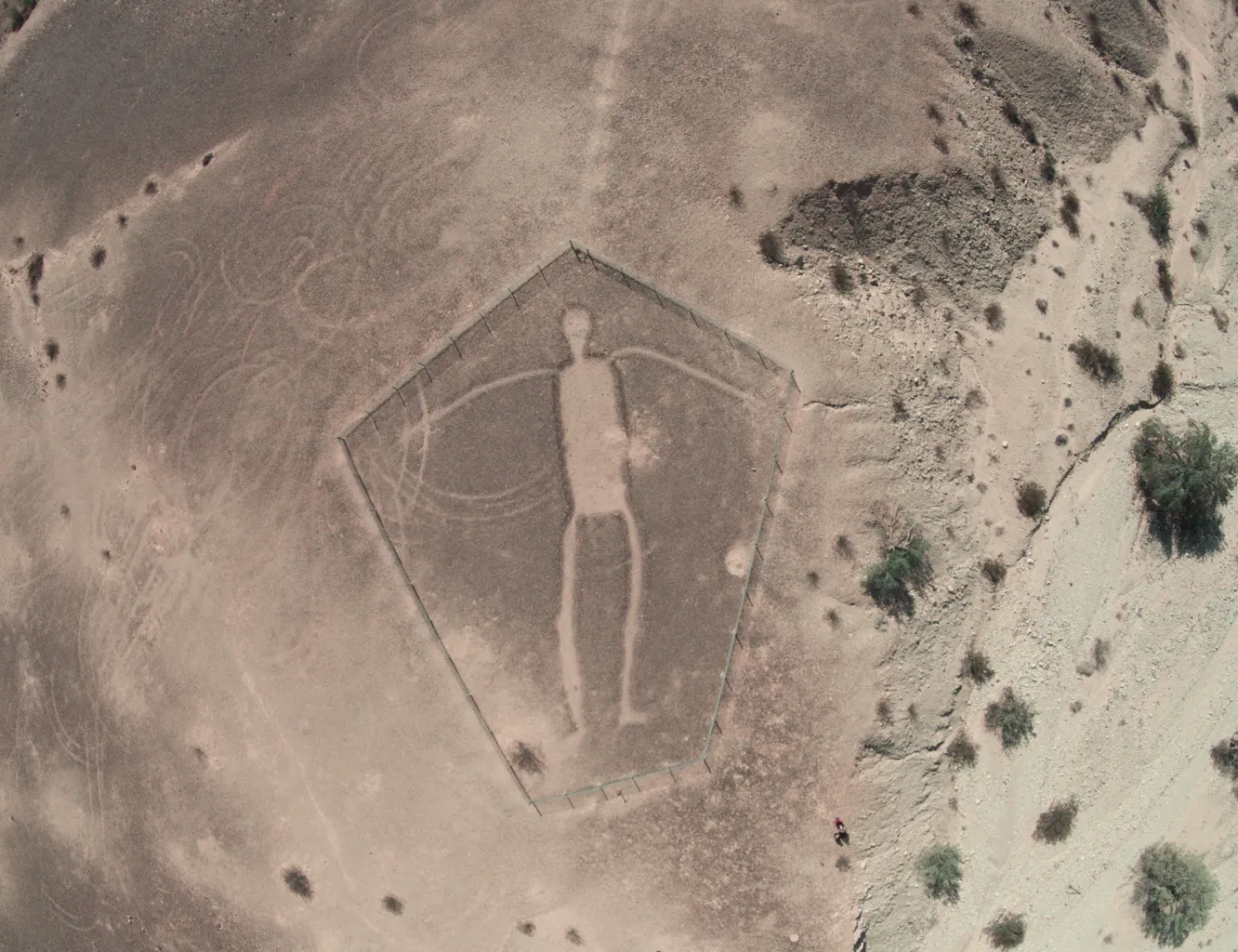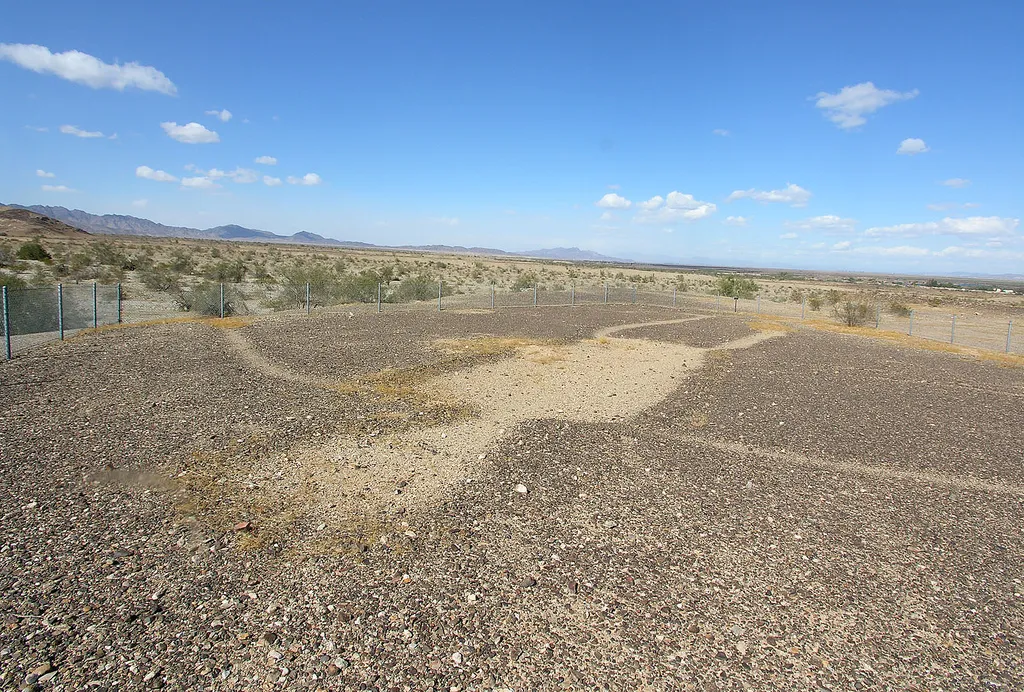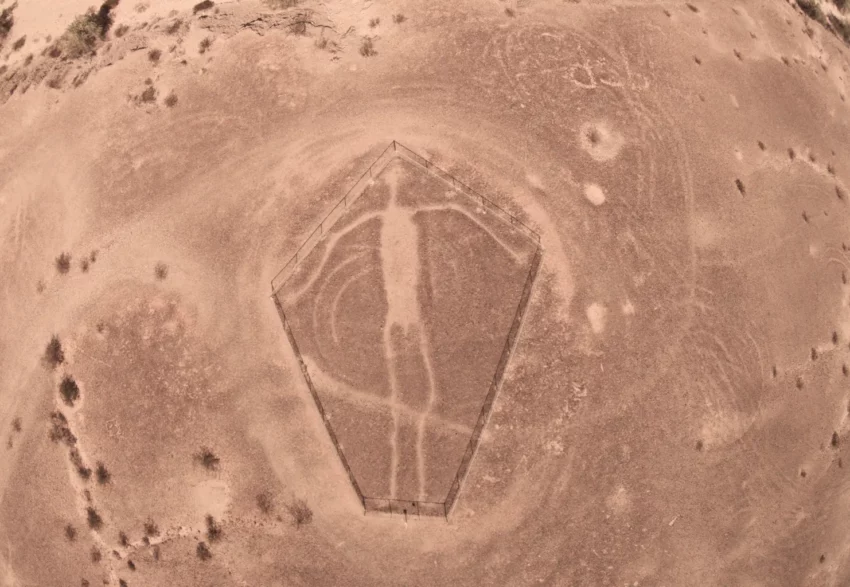Located in the vast Colorado Desert near Blythe, California, the Blythe Intaglios, also known as the Blythe Geoglyphs, are monumental desert figures etched into the earth. These impressive ground drawings remain shrouded in mystery, largely because their original purpose and creators are yet unknown.
Get your dose of History via Email
Geographical Setting of the Intaglios
The Blythe Intaglios rest east of the Big Maria Mountains, approximately 15 miles north of downtown Blythe and just west of U.S. Highway 95 near the Colorado River. This location makes them part of a unique collection of over 200 intaglios within the Colorado Desert—the only known desert intaglios in North America. Most of these intriguing artworks are situated along the banks of the Colorado River.

Composition and Observations of the Intaglios
Among the figures at the Blythe site are three human shapes, two animals that resemble quadrupeds, and a spiral. The largest of these human figures stretches an astonishing 171 feet long. To truly appreciate their scale and intricacy, one must view them from above, where their full grandeur is visible.
The geoglyphs were crafted by removing the top layer of dark rocks to expose the lighter soil beneath. The outlines of these figures were then emphasized with the displaced rocks, and the exposed ground was compacted to hinder vegetation growth, preserving the designs.
Historical Insights and Rediscovery
Despite their ancient origins, these immense figures remained unnoticed by contemporary observers until the 1930s. In 1932, pilot George Palmer spotted the geoglyphs while flying from Las Vegas to Blythe, leading to further investigations and eventually greater public awareness after a National Geographic feature in 1952. The site’s historical significance was recognized in 1982 when the Blythe Intaglios were added to the National Register of Historic Places.

Cultural and Ceremonial Significance
The intaglios near Blythe are believed to have served ceremonial purposes. Local Native American groups, while not claiming their creation, have acknowledged their use. The figures possibly date back to the prehistoric period, with some depicting animals that suggest more recent origins, such as horses reintroduced by the Spanish. The site includes various human and animal figures, which are thought to represent mythical characters from local legends, potentially used as ceremonial sites linked to Yuman oral history and cosmology.
Preservation Efforts
Due to their archaeological importance and vulnerability to damage, measures have been taken to protect these desert artworks. In 1974, the Bureau of Land Management erected fences around the intaglios to prevent further destruction.
A Broader Landscape of Geoglyphs
Beyond the Blythe area, other similar geoglyphs have been discovered, such as the Topock Maze near Needles, California. Although initially thought to be of Native American origin, recent studies suggest it may have resulted from gravel harvesting in the late 19th century. Regardless, these geoglyphs form a mysterious and captivating part of the cultural landscape, linking the present with the mystical past.
Conclusion
The Blythe Geoglyphs are a fascinating part of North American heritage, offering a window into the artistic and ceremonial practices of ancient desert cultures. Their exact origins and meanings remain subjects of intrigue and speculation, drawing visitors and researchers alike to this remote part of California, where history is literally written on the ground.
Sources: Wikipedia

